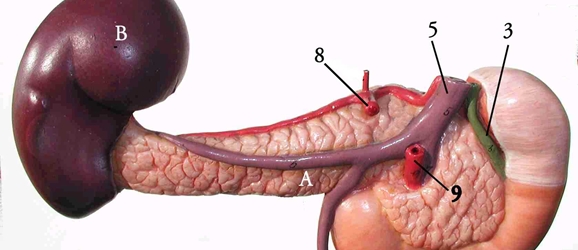Fun Fact: Your Pancreas Has A Sweet Tooth
 You read that right. Your pancreas, a handy little organ most of us probably couldn’t locate if our lives depended on it, has taste receptors just like your mouth does, specifically those designed to taste sweetness. The pancreas plays a role in both the endocrine system — secreting various hormones — and the digestive system — pumping out enzymes that aid digestion and help absorb nutrients. It’s in the former role where this interesting tidbit comes into play. New research published by Proceedings of the National Academy of Sciences of the United States of America reveals that the organ’s sweet taste receptors are designed to be activated by glucose from our diet. This causes the pancreas to release insulin, a hormone that allows cells in the liver, muscle, and fatty tissues to use the glucose as fuel.
You read that right. Your pancreas, a handy little organ most of us probably couldn’t locate if our lives depended on it, has taste receptors just like your mouth does, specifically those designed to taste sweetness. The pancreas plays a role in both the endocrine system — secreting various hormones — and the digestive system — pumping out enzymes that aid digestion and help absorb nutrients. It’s in the former role where this interesting tidbit comes into play. New research published by Proceedings of the National Academy of Sciences of the United States of America reveals that the organ’s sweet taste receptors are designed to be activated by glucose from our diet. This causes the pancreas to release insulin, a hormone that allows cells in the liver, muscle, and fatty tissues to use the glucose as fuel.
Unfortunately, this new research by George A. Kyriazis, Mangala M. Soundarapandian, and Björn Tyrberg reveals that the pancreas can also be triggered by fructose. Many people’s diets include lots of fructose, courtesy of high-fructose corn syrup found in processed foods ranging from breads and cereals to lunch meats and sodas. You’ve probably heard high-fructose corn syrup mentioned in connection with type-2 diabetes, and the pancreas is where that problem stems from. When the pancreas is being triggered by both glucose and fructose, it amps up our body’s insulin levels to unhealthy levels. Basically, your pancreas is like a kid at Halloween: it doesn’t care what form the sugar is coming in, just so long as it’s sweet. I bet the pancreas never brushes between meals, either.
On an unrelated note, a Google image search for images of the human pancreas turns up far too much information about pancreatic cancer for my liking. I’m going to go lay down in a dark closet for a while.
Thanks to the folks over at io9 for untangling the technobabble in the research’s original abstract. Header image courtesy Palomar College.












